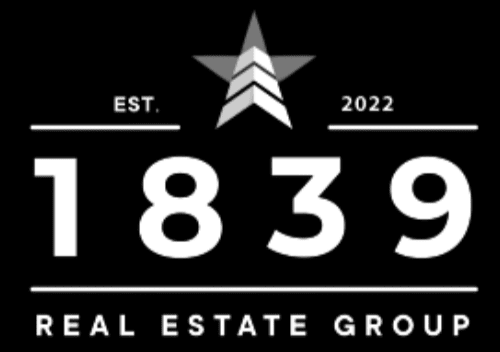The Art of Multifamily Land Development: Best Practices and Tips
Land Investment Overview
Market Trends and Statistics
Understanding market trends and statistics is crucial for making informed decisions in multifamily land development. Let’s delve into some key data points that can guide our investments.
- New Residential Construction: In June 2024, new residential construction saw a 3.0% increase compared to the previous month. Privately-owned housing starts were at a seasonally adjusted annual rate of 1,353,000 units.
- Wholesale Inventories: Monthly wholesale inventories in May 2024 increased by 0.6%. Sales of merchant wholesalers stood at $666.7 billion, while end-of-month inventories were at $901.7 billion.
- Rental Vacancy Rate: The rental vacancy rate in the first quarter of 2024 was 6.6%, similar to the rate in the first quarter of 2023. This rate was higher in the West compared to the previous year.
- Homeownership Rate: The homeownership rate in the first quarter of 2024 was 65.6%, also similar to the rate in the first quarter of 2023. Homeownership rates were lower in the Midwest compared to the previous year.
- Rural Land Development: The fourth quarter of 2023 saw a 44.6% year-over-year decline in annual sales volume for Texas rural land development. A total of 279,509 acres changed hands, down 61.2% compared to 2022. Prices, however, rose 5% to $4,670 per acre from year-end 2022 through year-end 2023.
| Metric | Value |
|---|---|
| New Residential Construction Increase (June 2024) | 3.0% |
| Privately-Owned Housing Starts (Annual Rate) | 1,353,000 |
| Monthly Wholesale Inventories Increase (May 2024) | 0.6% |
| Sales of Merchant Wholesalers | $666.7 billion |
| End-of-Month Inventories | $901.7 billion |
| Rental Vacancy Rate (Q1 2024) | 6.6% |
| Homeownership Rate (Q1 2024) | 65.6% |
| Texas Rural Land Sales Volume Decline (Q4 2023) | 44.6% |
| Total Acres Sold in Texas Rural Land (Q4 2023) | 279,509 acres |
| Average Price per Acre in Texas | $4,670 |
For more insights on market trends, check out our detailed article on market trends for commercial land in Austin.
Investment Opportunities
Investment opportunities in multifamily land development are abundant, especially in Austin and Texas. Here, we outline some promising avenues:
- Urban Infill Development: Developing vacant or underused parcels within existing urban areas can be highly profitable. These projects often benefit from existing infrastructure and proximity to amenities.
- Suburban Expansion: With the rise of remote work, suburban areas are becoming increasingly attractive for multifamily developments. Investing in land in these regions can yield significant returns.
- Mixed-Use Developments: Combining residential, commercial, and retail spaces in a single project can maximize land use and attract a diverse tenant base. For more information, refer to our article on the benefits of mixed-use development in urban areas.
- Economic Development Zones: Leveraging economic development zones can offer tax incentives and grants. These areas are often designated by local governments to encourage growth and investment. Learn more in our guide on leveraging economic development zones for land investments.
- Future Infrastructure Projects: Investing in areas slated for future infrastructure projects can lead to substantial appreciation in land value. Staying informed about upcoming projects is essential. Check out our article on future infrastructure projects impacting land value in Texas for more insights.
For those interested in exploring specific opportunities, visit our in-depth guide on land investment opportunities in Austin and top areas for commercial development in Texas.
By staying informed about market trends and carefully evaluating investment opportunities, we can make strategic decisions that maximize our returns in multifamily land development.
Selecting Development Locations
Choosing the right location is crucial in multifamily land development. In this section, we will explore best practices for evaluating potential sites and understanding zoning regulations and permits.
Evaluating Potential Sites
When evaluating potential sites for multifamily land development, several factors must be considered to ensure a successful investment.
- Market Trends and Statistics: Analyzing current market trends helps us understand the demand and supply dynamics in specific areas. For instance, the fourth quarter of 2023 saw annual sales volume in Texas rural land development slip by 44.6% year-over-year, with prices rising by 5% to $4,670 per acre statewide.
- Accessibility and Infrastructure: Proximity to major roads, public transportation, schools, and healthcare facilities can significantly impact the value and desirability of a property.
- Environmental Assessments: Conducting environmental assessments ensures that the site is free from contamination and meets all environmental regulations.
- Economic Indicators: Understanding the local economy, employment rates, and future infrastructure projects can help gauge the long-term viability of the investment. For example, future infrastructure projects impacting land value in Texas can be explored in our article on future infrastructure projects impacting land value in texas.
- Comparative Market Analysis: Comparing prices and sales volumes in various regions can provide insights into potential returns on investment. In Texas’ seven regions, prices in rural land development continued to increase, with some regions experiencing significant jumps, such as a 23.6% increase in Region 2 (Far West Texas). However, every region saw a decline in total acres sold.
| Region | Price Increase (%) | Acreage Decline (%) |
|---|---|---|
| Far West Texas (Region 2) | 23.6 | – |
| West Texas (Region 3) | – | 74.4 |
For a more detailed guide on identifying prime commercial land, refer to our article on how to identify prime commercial land for sale.
Zoning Regulations and Permits
Understanding zoning regulations and obtaining the necessary permits are critical steps in the land development process.
- Zoning Laws: Zoning laws dictate how a piece of land can be used. They are essential in determining whether a site is suitable for multifamily development. Zoning regulations can vary significantly from one municipality to another. For a comprehensive understanding of zoning laws, check out our article on understanding zoning laws for commercial real estate.
- Permits: Securing the necessary permits ensures that the development complies with local building codes and regulations. This process can include obtaining building permits, environmental permits, and occupancy permits.
- Community Involvement: Engaging with the local community and stakeholders can help address any concerns and ensure that the development aligns with the community’s needs and expectations.
- Regulatory Compliance: Ensuring compliance with all federal, state, and local regulations is essential to avoid legal issues and potential delays in the project.
By thoroughly evaluating potential sites and understanding zoning regulations and permits, we can make informed decisions that maximize the success and profitability of multifamily land development projects. For more insights on land investment opportunities in Austin, visit our article on land investment opportunities in austin.
Development Strategies
To successfully navigate the multifamily land development landscape, it is essential for us to consider both design and construction aspects as well as financing and investment analysis. These strategies are key to ensuring the successful execution of our projects.
Design and Construction Considerations
Design and construction are critical components of any multifamily land development project. Proper planning and execution in these areas can significantly impact the project’s success. Here are some key considerations:
- Architectural Design: The design should be aesthetically pleasing and functional, meeting the needs of future residents while adhering to local building codes and regulations.
- Sustainability: Incorporating green building practices can reduce long-term costs and appeal to environmentally-conscious buyers. This includes energy-efficient systems, sustainable materials, and water-saving technologies.
- Amenities: High-quality amenities such as gyms, pools, and communal spaces can attract potential tenants and justify higher rental rates.
- Construction Quality: Using durable materials and experienced contractors ensures the longevity of the buildings, reducing maintenance costs in the long run.
- Project Management: Effective project management is crucial for staying on budget and on schedule. This involves coordinating with architects, contractors, and other stakeholders to ensure smooth progress.
For more information on identifying prime commercial land for sale, visit our guide on how to identify prime commercial land for sale.
Financing and Investment Analysis
Securing financing and performing a thorough investment analysis are vital steps in the multifamily land development process. Here are some best practices:
- Cost Estimation: Accurately estimating the total cost of the project, including land acquisition, construction, permits, and other expenses, is crucial for securing financing and ensuring profitability.
- Funding Sources: Exploring various funding sources, such as traditional bank loans, private investors, and government grants, can provide the necessary capital for the project.
- Return on Investment (ROI): Conducting a detailed ROI analysis helps us understand the potential profitability of the project. This includes calculating projected rental income, operating expenses, and net operating income (NOI).
| Financial Metric | Description |
|---|---|
| Total Project Cost | Sum of all expenses including land, construction, permits, etc. |
| Expected Rental Income | Projected income from leasing the units |
| Operating Expenses | Ongoing costs such as maintenance, utilities, and property management |
| Net Operating Income (NOI) | Rental Income – Operating Expenses |
| ROI | (NOI / Total Project Cost) * 100 |
- Market Analysis: Understanding the local market conditions, including demand for multifamily units, rental rates, and vacancy rates, helps us make informed investment decisions. For insights on market trends, check out our article on market trends for commercial land in Austin.
- Risk Management: Identifying potential risks, such as construction delays, cost overruns, and market downturns, allows us to develop strategies to mitigate these risks and protect our investment.
By carefully considering design and construction factors, as well as conducting a thorough financing and investment analysis, we can maximize the success of our multifamily land development projects. For more detailed strategies on maximizing ROI from commercial land investments, visit our guide on how to maximize ROI from commercial land investments.
Working with Real Estate Professionals
Partnering with Experts
When it comes to multifamily land development, partnering with the right experts can make a significant difference. The 1839 Real Estate Group specializes in assisting developers, small to medium business owners, and those focusing on industrial and multi-family units. They offer comprehensive services such as investment analysis, acquisition and disposition, entitlements, and development services.
| Service | Description |
|---|---|
| Investment Analysis | Detailed market and financial analysis to ensure optimal investment decisions. |
| Acquisition and Disposition | Assistance in buying and selling properties efficiently. |
| Entitlements | Navigating zoning and permit processes to ensure project feasibility. |
| Development Services | Comprehensive support from project inception to completion. |
The expertise of 1839 Real Estate Group extends to helping clients lease their properties, conducting free evaluations for those looking to sell, and providing access to both on and off-market deals for those looking to buy. Their dedication to delivering fully encompassing services adds significant value to each client they serve.
For more information on evaluating potential sites and understanding zoning regulations, refer to our articles on how to identify prime commercial land for sale and understanding zoning laws for commercial real estate.

